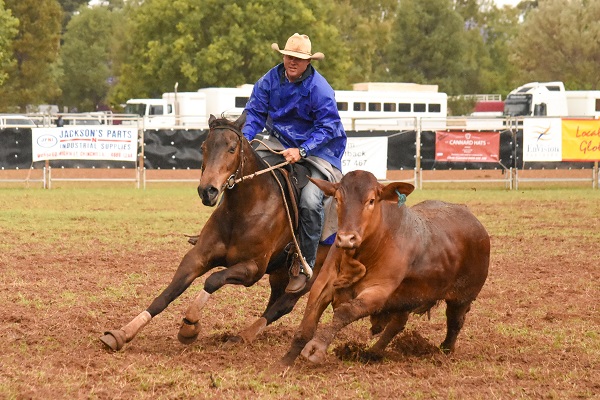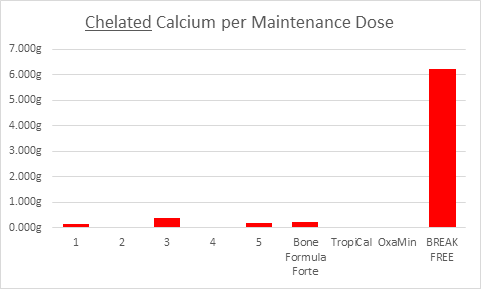Posted by Malcolm on 25th Aug 2019
Oxalates - Why your horse may still be moving poorly

The Oxalate Debate – Two Alternative Theories
Malcolm Green – EquiFeast Australia
Introduction
I’m writing this with a little trepidation because I am going to try to present one theory that I don’t believe in and another that almost nobody else has been exposed to. Since neither have any scientific backing (what have the academics being doing for the past few decades?) both rely on anecdote and some very limited field trials.
But there is one thing that most people will agree with:
“Horses will be healthier if you take them off oxalate grasses”. Interestingly I have found vets who propose this approach because they don’t believe that simply adding more calcium to the diet (the traditional theory) is reliable enough.
I have used the word “most” there quite intentionally because there are those that suggest that rich ryegrass and clover pastures may be even worse in some cases than oxalate pastures.
I have tried to make this readable so I won’t be boring readers with a tonne of science, pseudo-science or data or graphs and charts. Please read it in the spirit in which it is intended – to compare two theories neither of which perfectly fit the facts we see in the field.
What are the two competing theories?
I am going to call these theories:
The Calcium Deficiency Theory
and
The Functional Calcium Chelate Theory
The Calcium Deficiency Theory
This theory developed out of the explanations given decades ago for Millers' or Bran disease. The principle is that dietary calcium is bound up by phosphorus (in Millers disease) or oxalate (in oxalate poisoning – Big Head). This calcium is either not absorbed or, once absorbed, not released and so the horses simply become calcium deficient.
The animal’s response to insufficient calcium is to maintain blood and body fluid calcium levels by taking it out of the bones. Our blood trials suggest that this is pretty successful as far as those fluids are concerned because the blood tests show normal blood calcium parameters. Eventually the bones become mineral depleted and develop compensatory enlargement which shows mostly around the face area simply because those bones are so close to the skin. Bone demineralisation and deformation is almost always occurring elsewhere too but difficult to detect – even with X-rays. This very late stage of disease development has given the modern oxalate induced disease the colloquial name “Big Head”.
All the practitioners I have met agree that the facial bone symptoms only occur in about 5-10% of horses but equally they agree that way before animals reach this extreme they will have been having problems with short stepping gaits, shifting lameness, bad behaviour and hormonal issues. It seems that their tendons, ligaments, muscles, brains etc. are failing months or years before the bone demineralisation becomes apparent. And this is the first hint that the calcium deficiency theory doesn’t fit the facts as well as we had all thought.
All of these failing organs are, according to the theory, bathed in perfectly normal extra-cellular fluids. So why are they failing? They should be absolutely fine until the sacrificial bones are desperately damaged.
Perhaps more importantly the Calcium Deficiency Theory confidently predicts that all you need to do to overcome oxalates in the diet is to “feed more calcium”. Whilst many in the feed and supplements industry make this point I have found a number of vets who, as previously stated, say the only sure solution is to take the horses off oxalate feeds.
Where does chelated calcium fit into this theory?
In my view it doesn’t but there are a number of supplement manufacturers who argue that the calcium in a chelate is “protected” from oxalic acid attack. So it is absorbed into the bloodstream. My problem with this theory is that, if the calcium is bound so tightly that oxalate can’t rip it off, why should the chelate give up that calcium once it gets into the blood? The chelate we use actually binds calcium stronger than oxalate does. And chelated calcium (various different forms) are clearly documented in the veterinary texts as normal components of the blood.
The Functional Chelate Theory
In this theory we start from exactly that point – calcium chelates are normal components of a healthy animal’s blood and presumably their body fluids. Our blood trials strongly suggest that the homeostatic control system for calcium counts chelated calcium. That is crucial because nature wouldn’t have developed that trick unless it needed to and that implies that chelated calcium has a job or jobs to do.
Only about 50 calcium molecules in every million in our bodies are chelated so “science” hasn’t given them a second thought. Chelated calcium molecules are also electrically neutral and that makes them invisible to all the techniques used in the past thirty years to study ion channels and calcium signalling. Again scientists simply haven’t given any thought to these molecules.
I have been selling chelated calcium for 25 years and for most of that time I simply thought it was a great, highly bioavailable calcium source. I should have had doubts about that when we first gave it to a horse. My Paddy lived on limestone pasture and could never have been calcium deficient. Which is why for years I bought magnesium calmers for him in a vain attempt to stop him spooking on hacks and in the arena. They didn’t work and in desperation I poured a bottle of calcium gluconate (a chelate) down his throat. Twenty five minutes later he let out a huge sigh and we went into the school and had 45 minutes of calm relaxed riding.
But I still didn’t get it and assumed that when we did our first blood trials the chelated calcium supplement would boost ionised calcium (iCa). Imagine the shock when iCa dropped in more horses than it went up. So we now believe that there is competition for space in the blood between ionised calcium, chelated calcium and calcium oxalate (which is itself a chelate).
So there are two important assumptions behind this theory:
- That chelated calcium has a job to do
- Horses (and other animals including humans) can become deficient in chelated calcium especially when out competed by other sources of calcium
If the presence of large amounts of calcium oxalate can squeeze out these good chelates and create a deficiency then supplementing with adequate quantities of chelated calcium should enable the good chelates to be adequately re-established. In the vast majority of cases this seems to be the case.
Further support for this comes from the vet Elizabeth Herbert who published some case studies in 2015 where injecting a chelate (calcium borogluconate) produced a positive impact on the soft tissue function is a matter of minutes. Such an injection cannot have possibly corrected a calcium deficiency
The eagle eyed amongst you will by now see why, when we were first asked to look at Big Head, we did the counter intuitive thing and took away all the traditional calcium supplements the trial horses were getting. If our theory is right then limestone and DCP are probably contra-indicated when used with chelated calcium! I don’t want to overstate this because I don’t think it has a huge impact and experience suggests that excesses of magnesium have far more detrimental effects on horses than excesses of calcium.
So the next part of the Functional Chelate Theory is crucial. Our trials and subsequent field experience tell us that with adequate chelated calcium horses manage with lower levels of dietary calcium than the traditional theory suggests and this implies that one of the jobs that chelated calcium has is to help regulate calcium in the body. Our blood trials suggest this is true but much more work needs to be done to confirm this.
We also lack hard data on magnesium and phosphorus in particular. Again we seem to manage very well with lower than expected levels of these nutrients in the diet than the alternative theory suggests but more data would be very welcome.
Our work in the UK suggests that excesses of iron and possibly manganese and molybdenum can create similar symptoms to oxalate poisoning. These are minerals that are common in Australia so they may complicate the situation in some extreme cases.
Product selection
If you have been happy using products based on limestone and DCP and you don’t have any muscle, lameness and behavioural problems then I have no problem with you continuing to use your existing regime. I was originally invited to return to Australia to try to help the horses that were failed by this system not the ones that were doing fine.
If you do have these mobility and behavioural issues I would encourage you to try a proper chelated calcium supplement. Unfortunately there are a number of products on the market that claim to use adequate quantities of chelated calcium. None, except for EquiFeast, will quantify their formulations so we have tested them all – some twice. Here are the results. The first five are products that we bought and handled ourselves before sending them to the laboratory. Though we didn’t, we could have tampered with them. The last four are named because they were sent directly to the lab in their original packaging.
EquiFeast owns an Australian patent (2010 224615) and that kicks in at a threshold of 1 gram a day of chelated calcium. As you can see from this chart no competitor product gets anywhere near that. You will also note that in oxalate situations we maintain horses at about 6 grams a day (5 days a week) and load for 2-4 months at double that level.

True chelated calcium supplements are about five times the price of the inorganic products (with or without a smidgeon of chelated calcium). That reflects the higher cost of chelated calcium.
Our Australian website is www.equifeast-australia.com.
Vets and scientists may be interested in our discussion document “The Missing Link in Calcium Signalling” https://equifeast-australia.com/missing-link-in-calcium-signalling/
